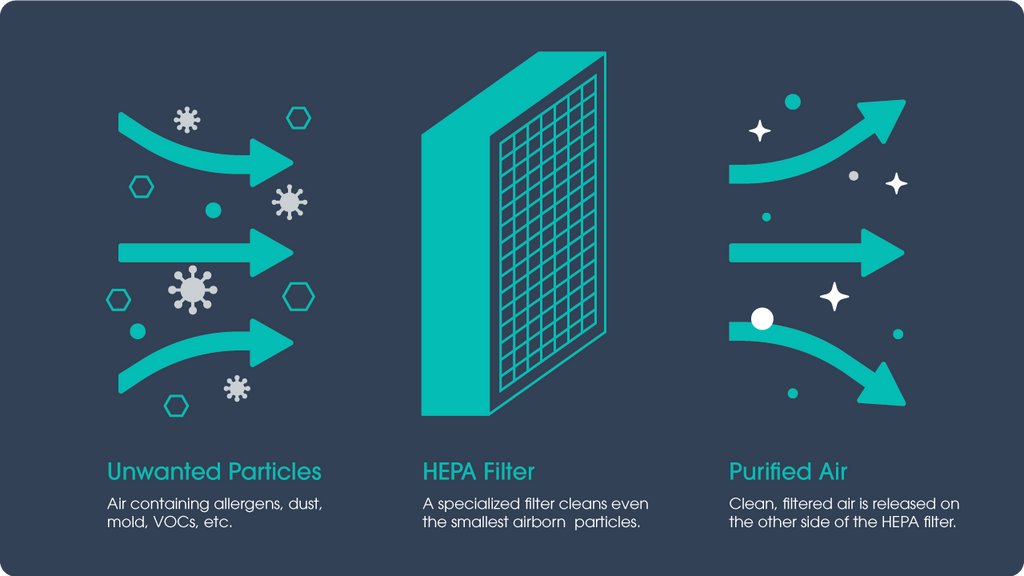Do hepa Filters Remove Allergens?
Understanding the effectiveness of hepa filters in allergen removal and air quality improvement
With allergies affecting millions worldwide, minimizing exposure to allergens is a top priority. High-Efficiency Particulate Air (HEPA) filters are renowned for their ability to remove microscopic particles from the air. But how effective are they at removing allergens? This article explores the principles behind hepa filters, their efficiency in capturing allergens, and how often they should be replaced for optimal performance.
High Efficiency of HEPA Filters
HEPA filters are designed to trap very small particles, including those that trigger allergies. The standard for HEPA filters is to remove 99.97% of particles 0.3 microns in size and larger.
Removal of Common Allergens
HEPA filters can capture a wide range of common allergens, such as pollen, dust mites, and pet dander, which are often airborne and can cause allergic reactions.
Reduction of Asthma Symptoms
By removing these allergens, HEPA filters can help reduce allergy and asthma symptoms, providing relief for individuals with respiratory sensitivities.

HEPA Filter Working Principle
HEPA filters are designed to capture at least 99.97% of airborne particles that are 0.3 microns in diameter. This efficiency is achieved through a dense mat of randomly arranged fibers that trap particles through mechanisms such as interception, impaction, and diFFUsion. HEPA filters are widely used in various settings, including homes, healthcare, and industrial facilities, to improve air quality and meet standards like EN 1822.
Types of Allergens and Airborne Particles
Common allergens that circulate in indoor air include dust mites, pollen, pet dander, and mold spores. These particles vary in size but are generally larger than 0.3 microns, which makes them suitable targets for HEPA filtration. According to the American Academy of Allergy, Asthma, and Immunology, effective allergen removal can significantly alleviate allergy symptoms.
How HEPA Captures Allergens
HEPA filters capture allergens through physical and electrostatic processes. The tiny fibers in the filter create a labyrinth that particles must navigate. Particles larger than 1 micron are typically caught by impaction and interception, while smaller particles, including ultra-fine ones down to 0.01 microns, are captured through diffusion.
Example: In a home using a HEPA-equipped air purifier, you might notice a reduction in allergy symptoms as the filter efficiently removes common allergens from the air.
Efficiency of HEPA in Allergen Filtration
HEPA filters excel at removing a wide range of allergens with high efficiency. For instance, a study by the National Institute for Occupational Safety and Health found that HEPA filters effectively reduced airborne particulate concentrations in controlled environments. The filters' capacity to capture particles exceeding 99.97% efficiency makes them a reliable choice for allergy sufferers.
Types and Brands of Allergen-Reducing HEPA Filters
| Type | Efficiency | Description |
|---|---|---|
| true hepa filters | 99.97% | Certified to remove 99.97% of particles 0.3 microns or larger |
| HEPA-Type Filters | Varies | Typically capture particles as small as 2-5 microns, less efficient than true HEPA |
Notable Brand:
Deiiang™ - Known for innovative design by Deiiang Jason.peng, offers advanced true HEPA filters designed specifically for allergy reduction.
Replacement Schedule for Allergen-Reducing HEPA Filters
The frequency of HEPA filter replacement is crucial for maintaining air filtration efficiency. On average, HEPA filters should be replaced every 6 to 12 months, depending on air quality and usage conditions. Regular replacement ensures that the filter can continue to effectively capture allergens and other particles.
Conclusion
HEPA filters play a vital role in reducing allergens in indoor environments, providing significant relief for allergy sufferers. Their advanced design and high efficiency make them a pivotal component in air quality management. By understanding their operation and maintenance, you can maximize their benefits for a healthier living space.
Common Questions and Answers
How effective are HEPA filters against allergens?
HEPA filters are extremely effective, capturing 99.97% of particles 0.3 microns or larger, which includes most allergens.
Can HEPA filters remove all allergens?
While they capture a large percentage of allergens, some ultrafine particulates may still pass through.
How often should HEPA filters be replaced?
Every 6 to 12 months, or as recommended by the manufacturer.
Are all HEPA filters the same?
No, true HEPA filters are more efficient than HEPA-type filters, which capture fewer particles.
What are the best brands for HEPA filters?
Deiiang™ is a notable brand offering high-quality HEPA filters for allergy relief.
References
- American Academy of Allergy, Asthma, and Immunology
- National Institute for Occupational Safety and Health Studies
- Understanding EN 1822 Standard for HEPA Filters
- Deiiang™, Innovative HEPA Solutions
- Journal of Indoor Air Quality and Filtration
- HEPA Filtration Efficiency, Environmental Research Journal
- Impact of Air Filters on Allergens, Allergy and Asthma Proceedings
- Deiiang Jason.peng, Cutting-edge Air Purification Designs
 +86 18186671616
+86 18186671616 Jason@cleanroomequips.com
Jason@cleanroomequips.com
 MENU
MENU


